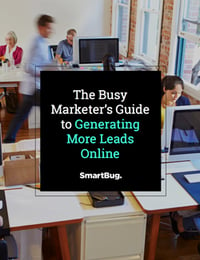
How to Create Deal-Closing Case Studies for Your Professional Services Company
August 7, 2019
Case studies are for closers. Blogs, e-books, and webinars certainly have their own place in your marketing strategy, but case studies—when done correctly—are the most effective type of content for converting your contacts into paying customers.
Why are case studies are so powerful? In the decision stage of the Buyer’s Journey, your prospects are wrestling over whether or not they should trust you with their money. If we sign this contract are they going to deliver?
When you have case studies that report real results from real customers, you immediately give your leads a reason to trust you, and more importantly, a reason to confidently sign on the dotted line.
If you work for a professional service company, follow each of these four steps and soon you’ll be creating case studies that actually close deals.
1. Choose the Right Client
Financial advisors, lawyers, and accountants know this mantra well: Relationships are the key to sales. And in this instance, relationships are the key to a successful case study.
Before you move an inch, you need to find a willing (and worthy) participant. Start by asking yourself these two questions:
- Who are your most successful clients?
- Which clients do you have the best relationship with?
The perfect case study candidate is where this Venn diagram overlaps. Happy clients that know you well will not only be willing to participate, but will also help you produce the highest quality of content—something that’s worth showing off on your website.
When you present your best client relationship as a case study, you’ll attract more ideal clients that are cut from the same cloth.
2. Ask the Right Questions
When asking questions during the interview process, keep in mind that the case study should be relevant to several of your buyer personas—not just the specific customer you’ve chosen to feature. The majority of your leads should be able read the content and think, That sounds just like us. To accomplish this, ask general, open-ended questions like these:
- What was the pain point you were looking to solve?
- How were you trying to solve the problem before working with us?
- Why did you choose our solution?
- What happened when you started using our service?
Prospects reading your case study already know they have a problem and are actively looking for a solution. Your mission is to gather information that will show them your company and service are the right solution.
3. Create the Right Message
When creating awareness and consideration stage content, you should very rarely talk about your own company. Even though case studies (decision stage content) are the green light to do some self-promotion, there’s still a right and wrong way to approach this.
When writing the narrative of this success story, remember that your client is the hero, not you. This is their story. Keep this basic storytelling structure in mind when creating the copy:
- A client wanted something.
- A problem or obstacle got in the way.
- A guide (that’s you) stepped in and gave them a plan.
- An action plan led them to success.
As a professional services company, the story of your case study should present your company as a trusted guide. Your expert, knowledge-based services help your clients overcome obstacles so they can get what they want. Properly positioning yourself as the guide—not the hero—is the secret to building trust with a case study.
4. Use the Right Implementation
Now that you’ve created a proper (and powerful) case study, you’ve got a weapon that needs to be used wisely. For best implementation, follow these inbound marketing techniques carefully:
- Place a call to action (CTA) at the end of the case study with an offer to speak with your team or request a demo.
- Repurpose your case study into several pieces of content such as videos, infographics, and webpages in order to maximize reach.
- Promote the case study in consideration stage blogs that are relevant to the topic of the case study.
- Build a library of case studies on your website (you can view ours here) to show that you weren’t just a one-hit wonder.
- Feature and link to the case study toward the end of the sequence in lead nurturing emails.
Remember, the right message used at the wrong time is the wrong message. If you want your leads to trust you, don’t present the case study to a contact until it answers the question that they’re already asking.
The Takeaway
As a professional services company, trust is the name of the game. Creating a case study—one that makes your customer look like the hero—will give your leads the confidence they need to pull out their wallets.Now that you’re a pro at closing deals, get more leads by reading The Busy Inbound Marketer’s Guide to Generating More Leads Online.

About the author
Benji Bateman was formerly a Marketing Consultant based out of Knoxville, TN. With three years of HubSpot experience, he’s helped 15+ clients grow their digital presence, improve their visitor-to-lead conversion rates, and drive more sales for their organizations. When he's away from his desk, he’s likely watching a Clemson football game, listening to live music, or traveling like a local. Read more articles by Benji Bateman.





















